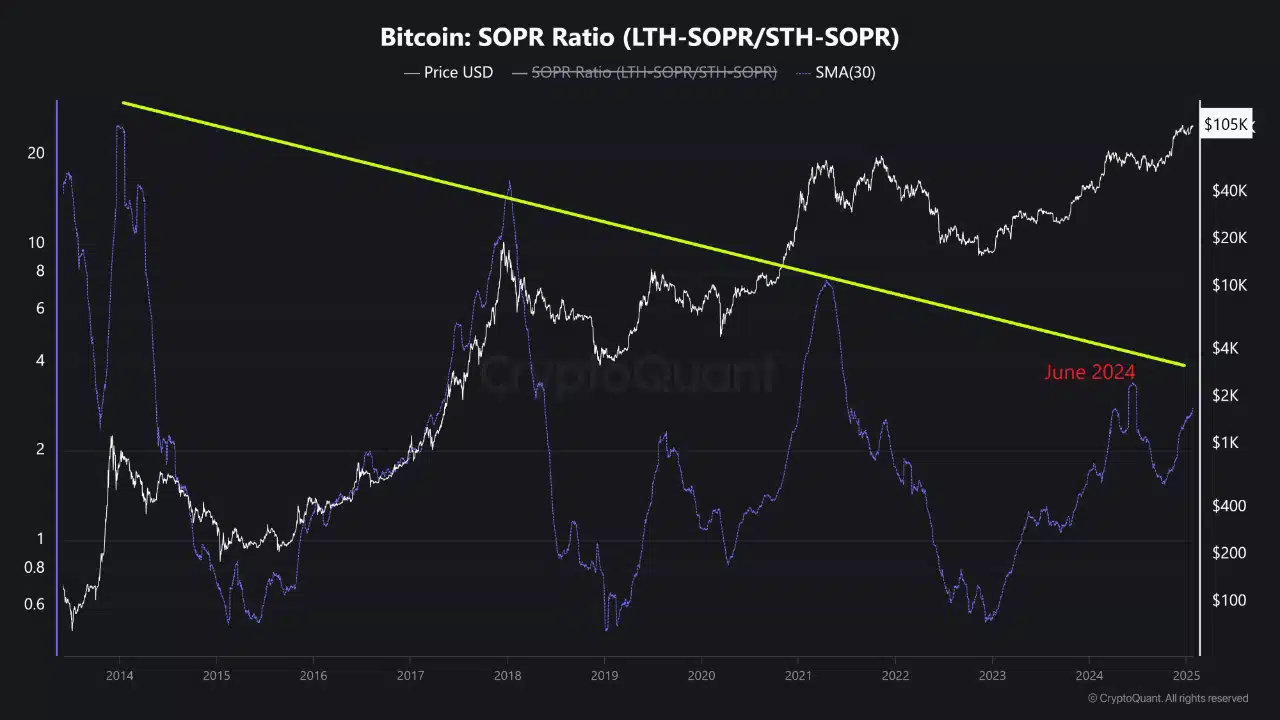-
As Bitcoin’s price correction unfolds, market analysis indicates a significant hesitance to sell among major long-term holders, hinting at potential new cycles.
-
Despite a recent decline below the critical $100,000 mark, long-term holders (LTHs) show no signs of panic selling, reinforcing the notion of an evolving market.
-
“Major market players are reluctant to sell,” a CryptoQuant analyst noted, reflecting a cautious yet hopeful sentiment towards Bitcoin’s future trajectory.
Bitcoin experiences a notable price correction with long-term holders showing reluctance to sell, hinting at stability despite short-term fluctuations.
Market Sentiment Reflects Long-Term Confidence
The current state of the Bitcoin market highlights a crucial behavior shift amongst long-term holders, or LTHs. This group is showing remarkable restraint during this correction phase, which is essential for the stability and future growth of Bitcoin. According to CryptoQuant metrics, even as Bitcoin’s price dipped nearly 8% from its all-time high, LTHs remained steadfast in their holdings.
The SOPR Ratio (Spent Output Profit Ratio) serves as a pivotal indicator in this context, illustrating the realized profits of long-term holders relative to short-term holders. The recent analysis from CryptoQuant underscores that this ratio is not accelerating at the same pace as previous bull runs. This trend signifies a maturation among Bitcoin investors, who are increasingly viewing their holdings as long-term assets rather than quick trades.
Institutional Influence on Market Behavior
Another significant aspect influencing this behavior is the growing participation of institutional investors within the crypto landscape. These entities are reshaping the perception of Bitcoin as a digital asset, often favoring it as a store of value rather than a trading vehicle. This transition has consequently led to diminished trading volumes on exchanges, as many LTHs prefer to retain their Bitcoin in portfolios rather than cashing out.
As the market landscapes evolve, this behavior could indicate a potential for reduced liquidity during corrections, which may contribute to less volatility in future price movements. This shift could herald the onset of new market cycles where speculative selling is minimized, leading to a more stable investment climate.
Analyzing Key On-Chain Metrics
To fully understand Bitcoin’s market dynamics, examining on-chain data is critical. The MVRV (Market Value to Realized Value) ratio has recently become a focal point of analysis, reflecting the overall sentiment and pricing strategy amongst investors. Data from CryptoQuant indicates that the MVRV ratio saw an increase from 2.2 to a peak of 2.52, before slightly retracting to 2.4.

Source: CryptoQuant
The recent fluctuations in the MVRV ratio suggest an underlying confidence among holders; a higher MVRV signifies that the market perceives Bitcoin’s value as above its realized price. Nevertheless, the recent pullback hints at a possible period of consolidation, signaling that while there is resilience, caution will serve investors well.
Conclusion
In summary, Bitcoin is currently navigating a correction phase, yet the behavior of long-term holders displays confidence in its future potential. By resisting the urge to sell amidst price declines, LTHs contribute to stability and a hint of optimism about future cycles. As institutional investors continue to reshape market dynamics, the outlook for Bitcoin remains cautiously optimistic, with a potential focus on long-term holding strategies paving the way for a more robust market in the future.
